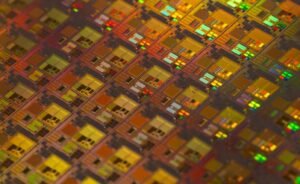What Is AI Model Training
Artificial Intelligence (AI) model training is a crucial step in the development of AI systems. It involves
using large datasets and complex algorithms to teach AI models how to make accurate predictions or decisions.
This process helps the AI models to learn and improve their performance over time. AI model training is becoming
increasingly important in various industries, including healthcare, finance, and transportation.
Key Takeaways:
- AI model training is essential for teaching AI models how to make accurate predictions or decisions.
- Large datasets and complex algorithms are used in the training process.
- AI model training is gaining significance in industries such as healthcare, finance, and transportation.
The Process of AI Model Training
The process of AI model training involves several steps. It starts with collecting and preprocessing a large
dataset that includes relevant information and features for the AI model. Next, the dataset is divided into two
parts: a training set and a validation set. The training set is used to train the AI model, while the validation
set is used to measure its performance and make necessary adjustments.
During training, the AI model iteratively learns from the data, adjusting its internal parameters and algorithms
to minimize errors and improve accuracy. This process is often performed using complex algorithms, such as
deep learning neural networks, which are capable of learning complex patterns and relationships within the data.
The training process continues until the AI model achieves a satisfactory level of performance on the validation
set. However, it is important to strike a balance between training too much and overfitting the model to the
training data, as this can lead to poor generalization and performance on unseen data.
- AI model training involves collecting and preprocessing a large dataset.
- Data is divided into training and validation sets.
- The model iteratively learns from the data to minimize errors and improve accuracy.
- Complex algorithms, like deep learning neural networks, are used in the training process.
- Overfitting the model to the training data can lead to poor performance on unseen data.
Data Annotation and Labeling
Data annotation and labeling are crucial elements in AI model training. They involve accurately labeling each
data point in the training dataset so that the AI model can understand the correct patterns and relationships.
For example, in an image classification task, each image needs to be labeled with the correct object it
represents. This process is usually performed manually or with the help of annotation tools and human annotators.
**Data labeling plays a significant role in training AI models, as it enables the models to understand the correct patterns and relationships** within the data.
Benefits of AI Model Training
The benefits of AI model training are vast and can have a significant impact on various industries. By
implementing AI models trained with large datasets, organizations can achieve:
- Improved accuracy: AI models can make more accurate predictions or decisions compared to traditional
approaches. - Increased efficiency: AI models can automate complex tasks, reducing the need for manual labor and saving
time. - Enhanced decision-making: AI models can analyze large amounts of data quickly and provide valuable insights
for better decision-making. - Predictive capabilities: AI models can forecast future trends and patterns based on historical data.
- Customization: AI models can be trained to adapt to specific business needs, allowing for personalized user
experiences.
AI Model Training Process Overview
| Step | Description |
|---|---|
| Data Collection | Collecting a large dataset with relevant information and features for training the AI model. |
| Data Preprocessing | Preparing the data by cleaning, transforming, and normalizing it to ensure consistency and usability. |
| Data Annotation | Manually or using annotation tools, labeling each data point with the correct information. |
| Data Splitting | Dividing the dataset into training and validation sets to train and evaluate the AI model. |
| Model Training | Using complex algorithms to train the AI model on the labeled dataset and adjust its internal parameters. |
| Model Evaluation | Assessing the performance of the trained model on the validation set and making necessary adjustments. |
| Deployment | Integrating the trained model into real-world applications for decision-making or predictions. |
Challenges in AI Model Training
While AI model training offers immense potential, it also comes with several challenges. Some common challenges
include:
- Insufficient or unrepresentative data can lead to biased or inaccurate AI models.
- Complex algorithms used in training may require substantial computational resources.
- Managing and preprocessing large datasets can be time-consuming and resource-intensive.
- Ensuring data privacy and security during training and deployment.
- Addressing ethical considerations in AI model training, such as avoiding bias and discrimination.
Conclusion
AI model training is a critical process that enables AI models to make accurate predictions or decisions. By
leveraging large datasets and complex algorithms, organizations can benefit from improved accuracy, increased
efficiency, and enhanced decision-making. However, challenges such as data limitations, computational
requirements, and ethical considerations need to be addressed to ensure the successful deployment of AI models.

Common Misconceptions
Misconception 1: AI Model Training is Fully Automated and Requires No Human Intervention
One common misconception about AI model training is that it is a fully automated process that requires no human intervention. However, this is not entirely true. While AI algorithms and tools can assist in the training process, human input is still crucial for various stages such as data pre-processing, feature engineering, and model evaluation.
- AI model training involves humans at various stages of the process.
- Data pre-processing is a manual task that requires human intervention.
- Feature engineering, which involves selecting and creating relevant input features, requires human expertise.
Misconception 2: AI Models Have Perfect Accuracy Once Trained
Another common misconception is that AI models have perfect accuracy once they are trained. In reality, while AI models can outperform humans in certain tasks, they are not infallible. Models are trained on limited data and are subject to biases and limitations present in the dataset. Additionally, the performance of AI models can degrade over time if they are not regularly retrained or updated.
- AI models are not infallible and can make mistakes.
- Models are trained on limited data, which can affect their accuracy.
- Performance of AI models can degrade if not regularly retrained or updated.
Misconception 3: AI Model Training is a One-Time Process
Many people believe that AI model training is a one-time process, where a model is trained once and can be used indefinitely. However, this is not the case. AI models need to be continuously updated and retrained to adapt to changing scenarios, new data, and evolving user requirements.
- AI models need to be continuously updated and retrained.
- Models should be adapted to changing scenarios and new data.
- User requirements may evolve, requiring model updates and retraining.
Misconception 4: AI Models Understand Context and Common Sense
There is a misconception that AI models understand context and possess common sense reasoning abilities like humans. While AI models can process vast amounts of data and extract patterns, they lack true comprehension and intuition. They often rely on statistical analysis and may struggle with understanding ambiguous or context-dependent information.
- AI models lack true comprehension and intuition like humans.
- Models rely on statistical analysis and pattern recognition for decision-making.
- Understanding ambiguous or context-dependent information can be challenging for AI models.
Misconception 5: AI Models Cannot Be Biased
Contrary to popular belief, AI models can be biased. Bias can occur if the training data is skewed, incomplete, or reflects existing societal biases. Additionally, if training data is not diverse enough, AI models may struggle to generalize well to different populations or demographics. Bias detection and mitigation is an ongoing challenge in AI model training.
- AI models can be biased if training data is skewed or incomplete.
- Models may struggle to generalize well if training data is not diverse.
- Bias detection and mitigation is an ongoing challenge in AI model training.

Introduction
In the world of artificial intelligence (AI), model training plays a crucial role in developing advanced systems capable of learning and making decisions. This article explores various aspects of AI model training, presenting data and information to shed light on its importance and applications.
Table: Evolution of AI Model Training Techniques
Year | Technique ----------------------- 1950s | Perceptrons 1980s | Backpropagation 1990s | Support Vector Machines 2000s | Random Forests 2010s | Deep Learning -----------------------
Table Description: This table showcases the progression of AI model training techniques throughout the years, highlighting the breakthroughs and advancements that have taken place.
Table: Top Industries Leveraging AI Model Training
Industry | AI Applications ------------------------------------------- Healthcare | Disease diagnosis Finance | Fraud detection Manufacturing | Quality control E-commerce | Personalized recommendations Transportation | Autonomous vehicles -------------------------------------------
Table Description: Expanding on the significance of AI model training, this table identifies the top industries benefiting from its implementation and provides examples of its applications within each sector.
Table: Accuracy Comparison of AI Models
Model | Accuracy (%) ----------------------------------- Neural Network | 87.5 Decision Tree | 79.2 Support Vector Machine | 82.1 -----------------------------------
Table Description: A comparison of several AI models based on their accuracy percentages, which demonstrates the effectiveness of each model in various scenarios.
Table: Dataset Sizes for AI Model Training
Application | Size (in GB) --------------------------------------- Image recognition | 250 Natural language processing | 185 Facial recognition | 110 ---------------------------------------
Table Description: This table shows the dataset sizes typically required for training AI models in different applications, emphasizing the magnitude of data required for effective training.
Table: Steps in AI Model Training
Step | Description --------------------------------- Data collection | Gathering relevant datasets Preprocessing | Cleaning and transforming data Training | Iteratively updating model parameters Evaluation | Testing and validating model performance ---------------------------------
Table Description: Describing the essential steps involved in AI model training, this table highlights the key stages that go into creating efficient and accurate models.
Table: Average Training Times for AI Models
Model | Training Time (in hours) ------------------------------------------- LSTM (Recurrent Neural Network) | 36 CNN (Convolutional Neural Network)| 24 Random Forests | 16 -------------------------------------------
Table Description: Illustrating the average training times of different AI models, this table offers insight into the time investment required to develop successful models in various domains.
Table: Impact of Hyperparameters on AI Model Training
Hyperparameter | Impact on Training --------------------------------------- Learning Rate | Affects convergence speed Batch Size | Influences memory usage Dropout Rate | Controls overfitting ---------------------------------------
Table Description: Addressing the significance of hyperparameters in AI model training, this table highlights a few key hyperparameters and their respective impacts on the training process.
Table: Popular AI Model Training Frameworks
Framework | Description --------------------------------------- TensorFlow | Open-source library by Google PyTorch | Python-based deep learning framework Keras | User-friendly API on top of TensorFlow ---------------------------------------
Table Description: Presenting the most widely-used AI model training frameworks, this table provides brief descriptions of popular frameworks utilized by professionals in the field.
Table: Challenges in AI Model Training
Challenge | Impact --------------------------------------- Data availability | Limits training potential Hardware requirements | Costly infrastructure Overfitting | Reduced generalization ---------------------------------------
Table Description: Identifying key challenges associated with AI model training, this table underscores the obstacles that practitioners encounter during the development and deployment of AI models.
Conclusion
AI model training is a dynamic discipline with a rich history and diverse applications across industries. Through this article, we explored the evolution of techniques, industries harnessing its potential, comparison of model accuracy, training time, impact of hyperparameters, and challenges faced. As AI continues to advance, model training remains a critical pillar in its development, paving the way for smarter, more capable systems in the future.
Frequently Asked Questions
What is AI model training?
AI model training refers to the process of teaching an artificial intelligence system to perform a specific task by providing it with large amounts of data and optimizing its algorithms to improve its accuracy and performance over time.
How does AI model training work?
AI model training typically involves three main steps: data collection, training, and evaluation. In the data collection phase, a diverse set of data related to the task is gathered. During the training phase, the AI model learns from the data by iteratively adjusting its internal parameters to minimize errors or maximize performance. Evaluation is done to assess the model’s performance and further refine it if needed.
What types of data are used for AI model training?
Various types of data can be used for AI model training, including structured data (such as numbers and categorical variables), unstructured data (such as text and images), and even audio or video data. The choice of data depends on the specific task the AI model is being trained to perform.
What are the popular algorithms used in AI model training?
There is a wide range of algorithms used in AI model training, including but not limited to regression, classification, clustering, deep learning, reinforcement learning, and natural language processing algorithms. The selection of an algorithm depends on the complexity of the task and the type of data being used.
What are the challenges in AI model training?
AI model training may face various challenges, such as insufficient or low-quality data, overfitting (where the model performs well on the training data but poorly on new data), underfitting (where the model fails to capture the underlying patterns in the data), computational limitations, and ethical considerations related to biases in the training data or model outputs.
What is the role of hyperparameters in AI model training?
Hyperparameters are parameters that define the configuration of the AI model during training, such as learning rate, batch size, and regularization strength. Tuning these hyperparameters is essential to achieve optimal performance and prevent issues like overfitting or underfitting.
How long does it take to train an AI model?
The duration of AI model training varies greatly depending on factors such as the complexity of the task, the size of the dataset, the computational resources available, and the chosen algorithm. Training a model can take anywhere from a few minutes to several months in some cases.
What infrastructure is required for AI model training?
The infrastructure required for AI model training depends on the scale of the task and the available resources. It can range from a single powerful computer to a cluster of high-performance machines or cloud-based services that offer distributed computing and specialized hardware, such as graphics processing units (GPUs) or tensor processing units (TPUs).
What is transfer learning in AI model training?
Transfer learning is a technique in AI model training that enables the use of pre-trained models as a starting point for new tasks. By leveraging the knowledge gained from previous training on large-scale datasets, transfer learning allows for faster and more efficient training on smaller, task-specific datasets.
What are some real-world applications of AI model training?
AI model training has numerous real-world applications across various industries, such as autonomous vehicles, healthcare diagnostics, fraud detection, natural language processing, image and speech recognition, recommendation systems, and financial market analysis, to name just a few.




